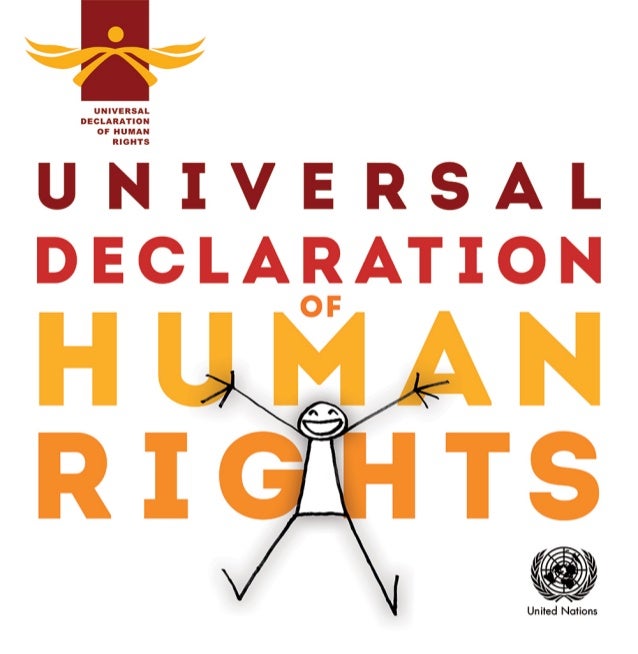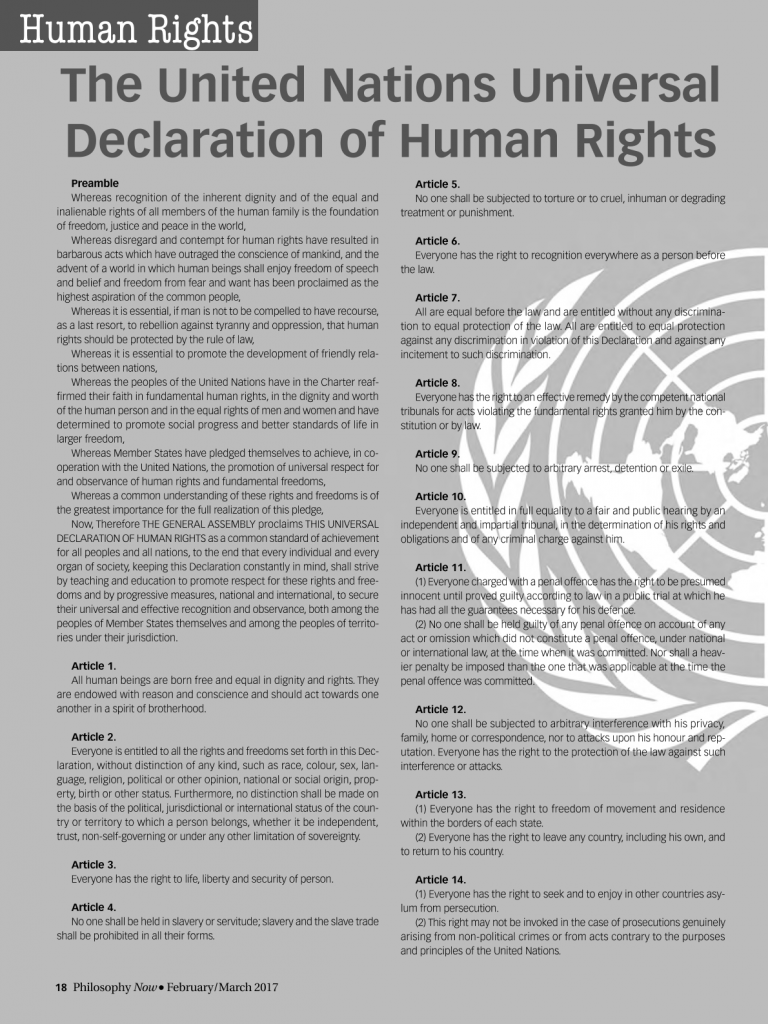
- UNIVERSAL DECLARATION OF HUMAN RIGHTS CODE
- UNIVERSAL DECLARATION OF HUMAN RIGHTS PROFESSIONAL
- UNIVERSAL DECLARATION OF HUMAN RIGHTS FREE
Other examples are guidelines issued by faith-based groups, advocates or consumer protection organizations. Examples of non-medical regulations include specific laws on research, preventive measures, promotion of medicinal products, birth control and palliative care. These codes acknowledge the occurrence of ethical conflicts and provide links for support.
UNIVERSAL DECLARATION OF HUMAN RIGHTS PROFESSIONAL
In the USA, professional organization codes include a responsibility to seek a change in official or legal requirements that are contrary to the best interests of the patient. Another issue is the necessity to maintain professional standards in providing the best possible care by continuing education and networking with other services and colleagues. Some of the main issues are: the patient’s autonomy of decision making informed consent dignity and confidentiality non-discriminatory beneficence and non-maleficence.
UNIVERSAL DECLARATION OF HUMAN RIGHTS CODE
Recent examples of the conduct code are the Standards of Conduct of the American Medical Association ( American Medical Association, 2001) and the Good Medical Practice of the English General Medical Council ( General Medical Council, 2010).

Several international and national bodies have started to work on the best practice development in addiction and concurrent disorders ( Rush, 2002) in keeping with these initiatives. Two kinds of initiative are key to the current efforts in medicine: (1) a long tradition of self-regulatory codes of conduct for physicians and (2) non-medical regulations and guidelines. This has been the official position of leading professional organizations for decades ( Leshner, 2001). Medical ethics only applies to substance dependence if it is understood as a medical condition.
UNIVERSAL DECLARATION OF HUMAN RIGHTS FREE
It marks a paradigm shift in attitudes and approaches … from viewing persons with disabilities as “objects” of charity, medical treatment and social protection towards viewing as “subjects” with rights, who are capable of claiming those rights and making decisions for their lives based on their free and informed consent as well as being active members of society ( Burns, 2009 United Nations, 2006 ). The United Nations declaration on the rights of persons with disabilities from 2006 is a recent example of a specific human rights instrument that responded to ongoing discrimination ( United Nations, 2006):

It is surprising, however, that this suggestion is rarely raised ( Burns, 2009).

The inclusion of this discourse, given the high level of stigma and violence against addicted individuals, would be an important addition. narcotics laws), but are highly controversial from a human rights perspective.

Compulsory measures against people with a substance dependence may be admissible on the basis of national laws (e.g. They are also referenced in other constitutions and in legislation, such as the Canada Health Act ( Government of Canada, 1984), that aims to establish a balance between protecting individual rights and respecting the needs of society for public order and general welfare. Many of these rights were created to protect the most vulnerable in society because of an international history of intolerance and misuse, as has occurred in Germany, South Africa, Russia and the USA.


 0 kommentar(er)
0 kommentar(er)
